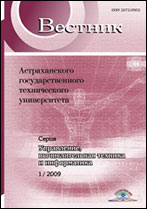|
This article is cited in 1 scientific paper (total in 1 paper)
COMPUTER SOFTWARE AND COMPUTING EQUIPMENT
Intelligent algorithm of identifying destructive information in the text
N. V. Davidyuk, V. A. Gostyunina, D. R. Baidulova
Astrakhan State Technical University, Astrakhan, Russian Federation
Abstract:
In the context of ensuring the information and psychological security of a society in the Russian Federation, the problem of uncontrolled growth of the Internet destructive content is being considered. The problem of search and identification of destructive information demands the minimal subjectivity and the maximum automation, because it is still solved generally by expert methods with drawing up registers of the forbidden sources. Existing search methods (expert processing, thematic search, intelligent data processing methods) used to find specific words in the text have been considered, the advantages and disadvantages of these methods have been stated. For solving the task set the intellectual algorithm of the modified search of destructive content has been suggested using foul language in the textual information as an example. The suggested approach has a different system of self-replenishment of the dictionary on the basis of identification of the unknown words as foul ones. The correctness of the dictionary replenishment is controlled by an expert. A detailed description of the developed algorithm has been presented. The example of the algorithm operation and initial results of its approbation are given.
Keywords:
offensive language, intellectual algorithm, destructive information, modified search, identification, dictionary, stemming.
Received: 15.01.2019
Citation:
N. V. Davidyuk, V. A. Gostyunina, D. R. Baidulova, “Intelligent algorithm of identifying destructive information in the text”, Vestn. Astrakhan State Technical Univ. Ser. Management, Computer Sciences and Informatics, 2019, no. 2, 29–39
Linking options:
https://www.mathnet.ru/eng/vagtu575 https://www.mathnet.ru/eng/vagtu/y2019/i2/p29
|

|




 Contact us:
Contact us: Terms of Use
Terms of Use
 Registration to the website
Registration to the website Logotypes
Logotypes








 Citation in format
Citation in format 
